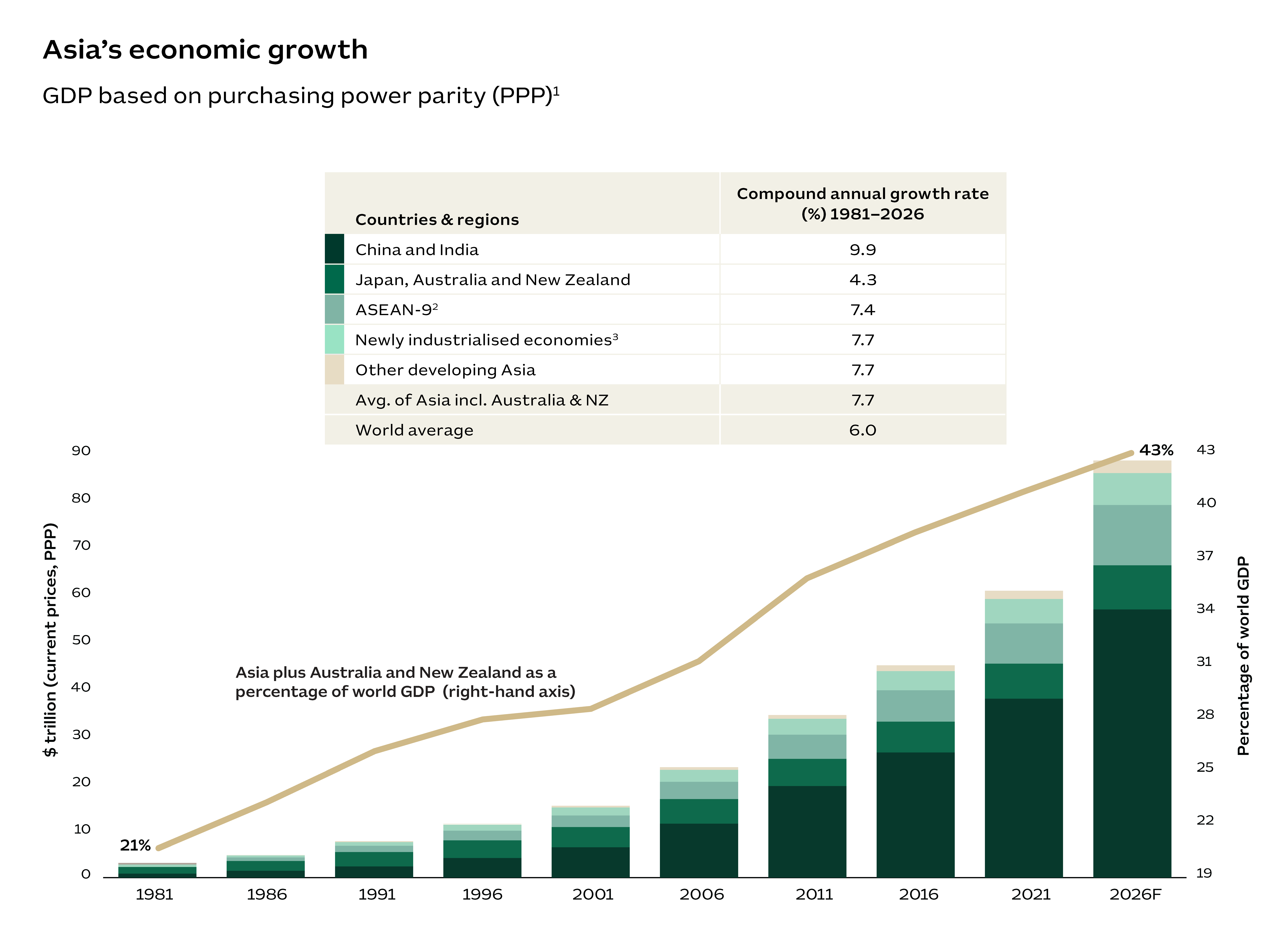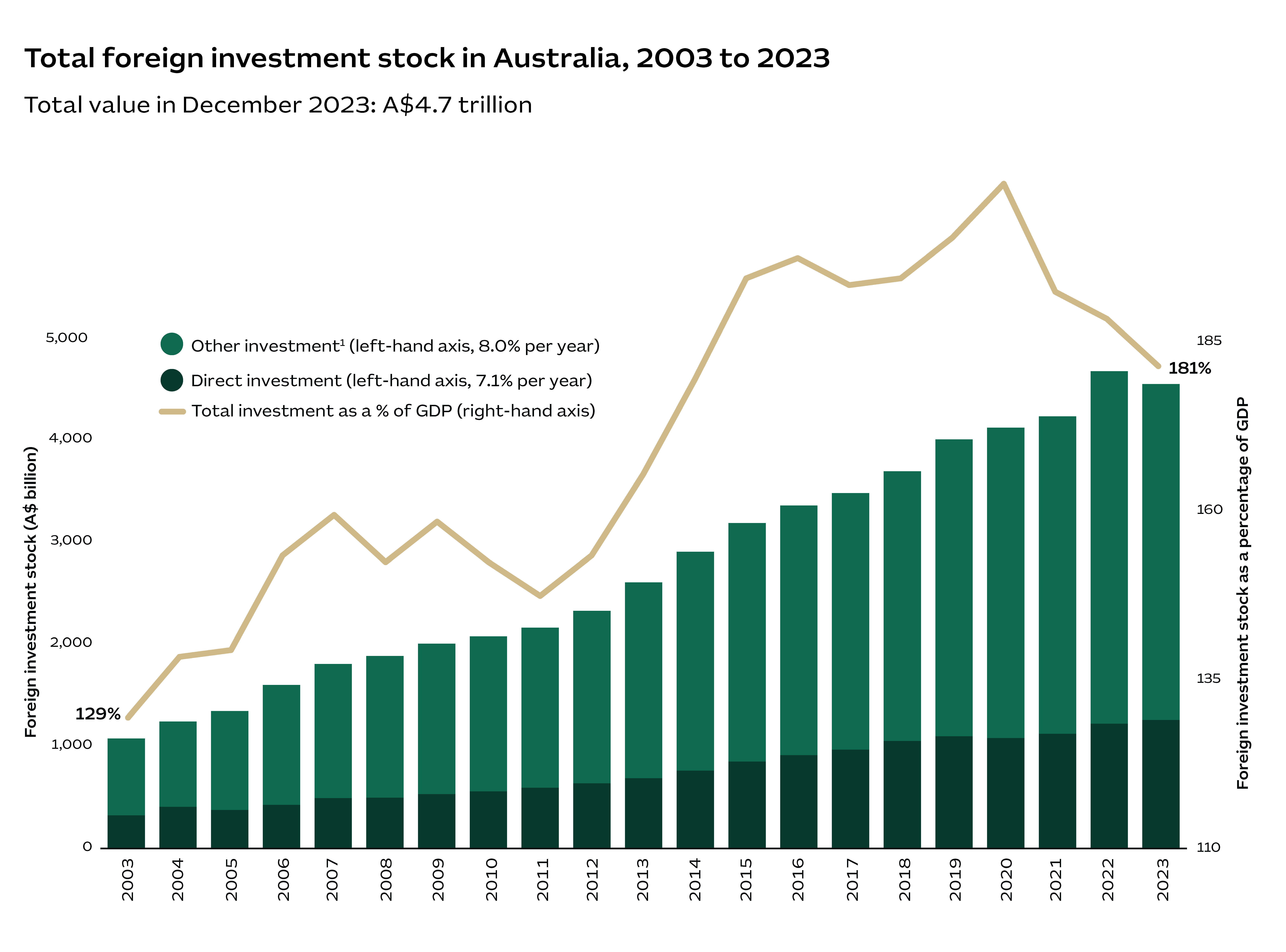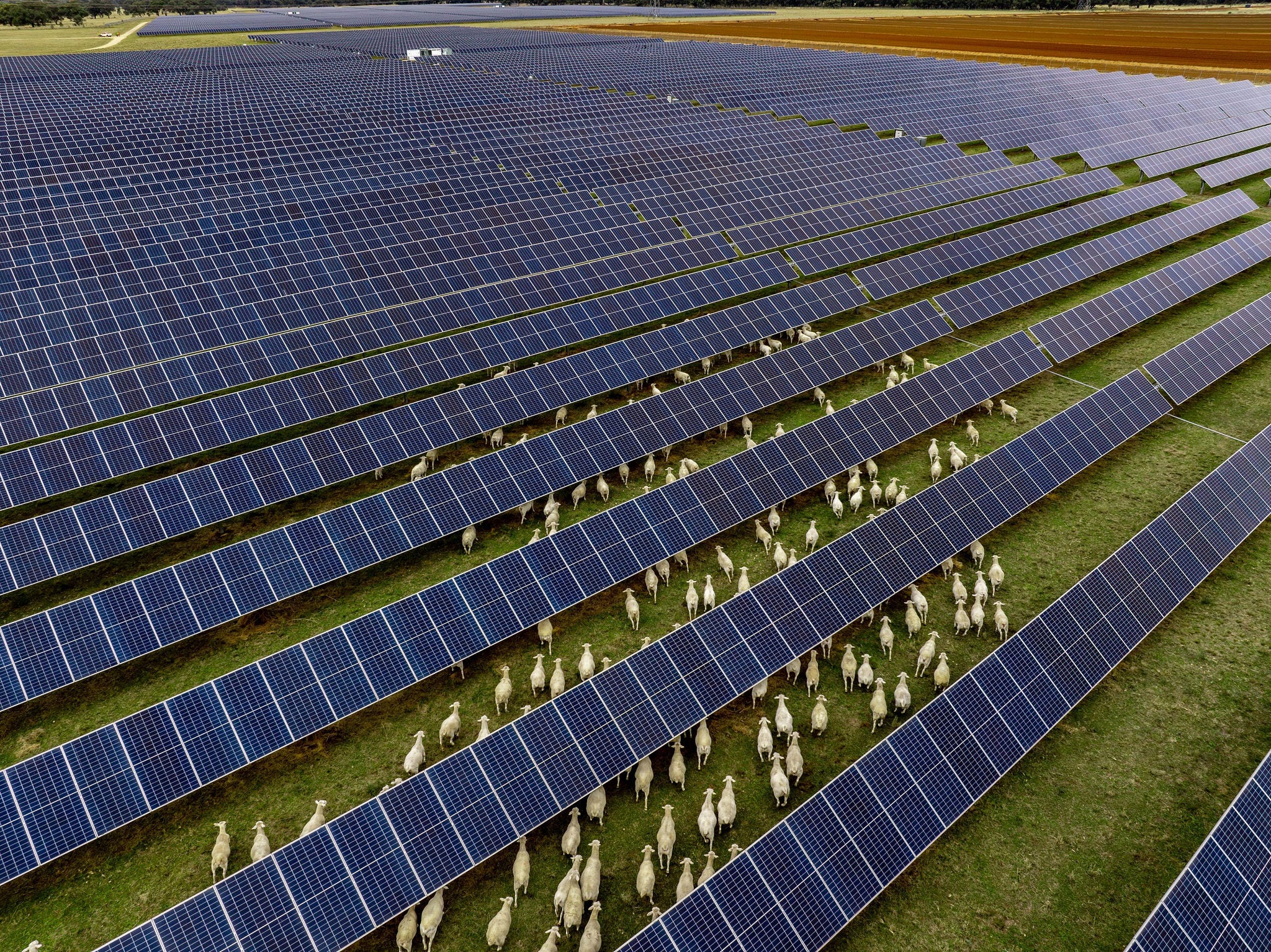1. The bar represents the value of regional gross domestic product at current prices based on purchasing power parity. 2. The Association of Southeast Asian Nations (ASEAN) includes Brunei Darussalam, Cambodia, Indonesia, Lao PDR, Malaysia, Myanmar, Philippines, Thailand and Vietnam. To avoid double counting with newly industrialised economies (NIEs) and ASEAN, Singapore was excluded from the ASEAN group. 3. NIEs: Singapore, Hong Kong SAR, Korea and Taiwan. 4. Brookings Institution, see source below.
F = Forecast


